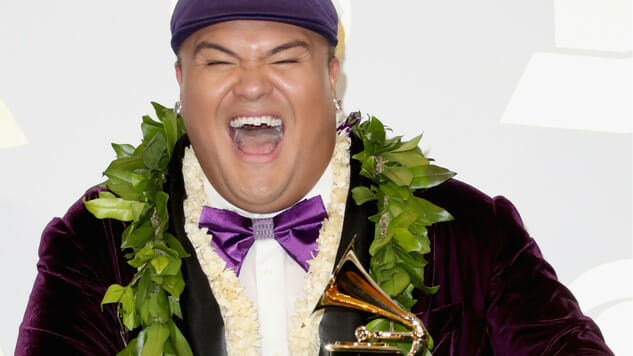5 Stories from the 2017 Grammys You Might Have Missed
Photo by Getty Images' Frederick M. Brown
The Grammys are usually a great breeding-ground for controversy, and this year was no exception. Did Adele deserve to win Album of the Year over Beyoncé? (Spoiler alert, the answer’s no.) Did Sturgill Simpson get stiffed? Does Justin Bieber hate the Grammys? Who turned off James Hetfield’s mic? All the hoopla and debates and boycotts and arguing tends to gloss over the fact that they have a far wider reach beyond the usual stars. There are many smaller categories that don’t make it to the mainstream broadcast, but are feted earlier in the day with their own televised ceremony. The glory days of niche-category Grammys, back when Jimmy Sturr the Polka King reigned supreme in his own polka category (he won 18 of the 24 Grammys given to polka artists) are over, and the Recording Academy has consolidated some of the many old categories into a smaller spread, but there are still strange and wondrous masterpieces to be found in the margins of the Grammys. These five stories may not have made it to Grammy primetime, but they show the breadth of the Grammys reach and the very real human stories behind the Grammy bling that last longer than the day after the awards.
1. Kalani Pe’a, E Walea
Back in 2011, the Recording Academy did away with some 30 categories, most of them based in specific niches. This included the Best Hawaiian Album category of the Grammys. Instead, the Grammys now recognize Best Regional Roots Album, which brought together the Hawaiian, Native American, Cajun, Zydeco and Polka genres. Despite a Hawaiian artist being nominated each year since 2011, this is the first year one has won. Maui-based singer Kalani Pe’a took home the prize this year, and though he comes from traditional roots, he may not look or sound like the usual vision mainlanders have of Hawaiian musicians. He’s most comfortable in Versace glasses and his trademark bowtie, and he’s obviously smitten by his fiancé and manager, make-up artist Allan B. Cool; the two make quite the power couple in Maui. There’s also not much traditional slack-key guitar on the album, with Pe’a preferring to draw from R&B and other more modern influences. Yet, he’s a fluent Hawaiian speaker who speaks the language with his family at home and has a deep knowledge of Hawaiian traditions. On this Grammy-winning album E Walea, Pe’a writes seven of the songs, bringing poetry to his Hawaiian language songwriting that’s served by his fluent relation with the language and his passion for teaching others. Interestingly, he came to singing as a way to overcome a speech impediment as a child. Now he’s risen to be one of the best young Hawaiian singers, able to bring a modern sensibility to his own vision of Hawaiian traditions.
2. White Sun, White Sun II
Though White Sun’s official Grammy award is for Best New Age Album, with their new album White Sun II, the award could just as well be, “Most Interesting Collaboration of Musicians from Vastly Different Backgrounds.” The core trio itself in White Sun is based around Gurusaj, a female Sikh artist who works with kundalini yoga mantras, but also includes yoga master Harijiwan, who focuses his work on the gong, and, interestingly, Hollywood composer Adam Berry, known for his work on South Park, Kim Possible and The Penguins of Madagascar. The album cover features a mandala specially painted for the group by Nepalese artist Ganesh Lama, and the album features special guests Malian kora player Mamadou Diabate and fiddler Gabe Witcher of the Punch Brothers. The album topped out the world and new age Billboard charts and even made the Heatseeker chart last year, buoyed by the large public demand for yoga music. The unusual juxtaposition of Sikh artists performing music intended for yoga, a largely Hindu practice, is tied to the specific tradition of kundalini yoga. Yogi Bhajan founded this practice in the U.S. in the late ‘60s and many of his followers congregate at to the Sikh Dharma, an institute based in New Mexico. The Sikh Dharma institute has connections in surprising places, including the fact that they own and produce Yogi Tea. They also have direct ties to a billion dollar private security firm. And while their practice of bringing yoga to Sikhism is not without controversy, the music on White Sun’s album is lush and eminently accessible. It’s a beautifully-produced album with what must be one of the more interesting backstories at the Grammys.
-

-

-

-

-

-

-

-

-

-

-

-

-

-

-

-

-

-

-

-

-

-

-

-

-

-

-

-

-

-

-

-

-

-

-

-

-

-

-

-








































